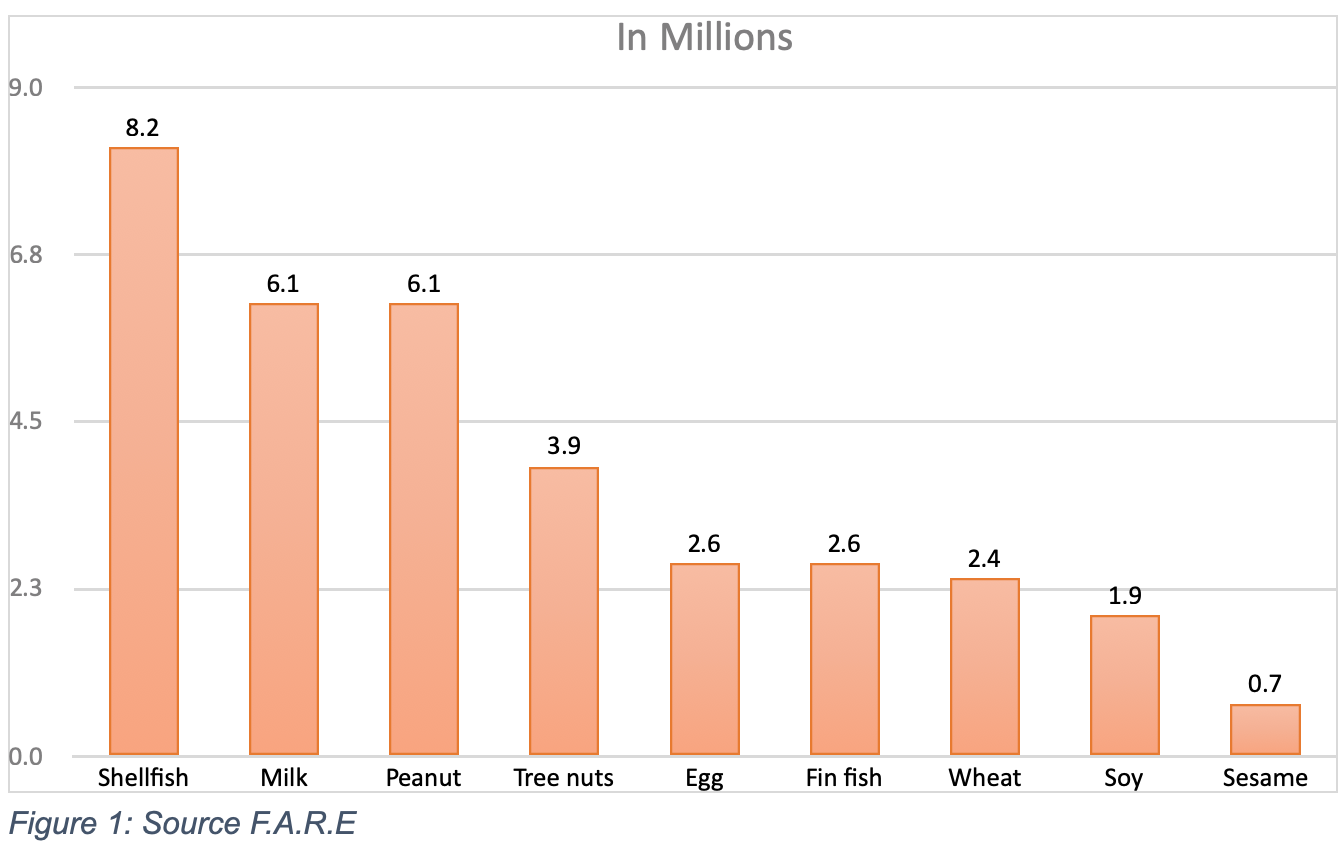‘When a Food Allergen is Your Enemy’ to be presented at the Food Safety Summit

Estimates suggest that 33 million Americans, among them 5.6 million children under the age of 18, contend with food allergies. This equates to approximately one in 13 children and one in 10 adults. That is roughly two children in every classroom. Alarmingly, about 40 percent of children affected by food allergies are allergic to multiple foods. Do you have children? If so, are you comfortable with this reality?
Food allergens — proteins — provoke an adverse immune reaction in individuals with food allergies. This response occurs when the immune system mistakenly targets harmless proteins in the food.
Symptoms of such reactions vary from mild, such as an itchy mouth or a few hives, to severe, including throat constriction and breathing difficulties. Anaphylaxis, characterized by a sudden onset of severe symptoms, poses a life-threatening risk. Severe or fatal reactions can happen at any age, but teenagers and young adults with food allergies are at the highest risk of fatal food-induced anaphylaxis. Most fatal food allergy reactions are triggered by food consumed outside the home.
Studies published in 2019 estimate the number of Americans of all
ages who have convincing symptoms of allergy to specific foods:

Allergens stand as a primary contributor to food recalls across the United States. The Food and Drug Administration imposes regulations concerning major food allergens and gluten-free labeling to safeguard the wellbeing of individuals with allergies and celiac disease, respectively, ensuring food safety.
The analysis of recall data for FDA-regulated foods from FY 2013 to 2019 sheds light on the prevalence and causes of violative foods. A total of 1,471 recalls were scrutinized, primarily focusing on food allergens and gluten. Of these recalls, 1,415 were attributed to major food allergens, 34 were linked to violations in gluten-free labeling, and 23 were associated with other allergens. The majority of major food allergen recalls were singular in allergen involvement, with bakery products such as dough, bakery mixes, and icings being the most frequently implicated category. Notably, almost all major food allergen recalls, 97 percent, centered around a single product category. Labeling errors emerged as the predominant root cause, contributing to more than 70 percent of major food allergen recalls with identifiable causes. This underscores the urgent need for the food industry to establish and enforce effective allergen control measures to mitigate the frequency of recalls stemming from major allergens.
The global landscape of food safety is consistently overshadowed by the looming threat of allergens, constituting a paramount concern for consumers worldwide. Instances of compromised food allergen or gluten safety within packaged food items can often trigger a cascade of subsequent recalls, compounding the impact on both consumers and manufacturers. Within this context, labeling inaccuracies persist as the primary culprit behind recalls related to major food allergens. This recurrent trend underscores the critical necessity for implementing robust allergen preventive measures throughout the entirety of the food production and management process.
The leading cause of label errors overwhelmingly stems from allergen-related mistakes, accounting for more than 90 percent of recalls attributed to labeling inaccuracies. The primary culprits identified in the study were instances of incorrect packaging and mislabeling. Furthermore, the study highlighted that allergen cross-contact, encompassing various root causes such as in-process contamination, other cross-contact incidents, positive allergen tests, rework issues, and incorrect ingredients, contributed to More than 20 percent of all recalls involving major food allergens.
Under the preventive controls requirements of the Food Safety Modernization Act of the cGMP and PC rule, applicable food facilities are required to implement food allergen controls that include (1) cross-contact controls to prevent or significantly minimize allergen cross-contact and (2) label controls to ensure allergens are properly labeled on the finished food.
Food allergens represent a significant danger to individuals afflicted, transforming routine meals into potential sources of peril. Even minute traces of allergenic substances can incite severe reactions, spanning from discomfort to life-threatening anaphylaxis, for those with allergies. Negotiating menus, examining labels, and scrutinizing ingredients demand constant vigilance, akin to navigating an invisible battlefield. Underestimating or disregarding these allergens can yield dire consequences, underscoring the critical need for heightened awareness and precaution in every culinary interaction. In this culinary terrain, knowledge transcends mere empowerment — it becomes essential for survival.
On May 9, at 2:45 p.m. CDT I will join Jennifer Fernan, JJ Snack Foods; Jorge Hernandez, The Wendy’s Company; and Rich Polinski Jr., Wegmans for the session “When a Food Allergen is Your Enemy” at The Food Safety Summit. The panelists will discuss what food safety professionals can do for the millions of Americans who have food allergies and may experience adverse reactions to products that have food allergens. Most reactions cause mild symptoms, but some are severe and may even be life-threatening. Although new treatments are being developed, there is no cure for food allergies. The session is sponsored by Elisa Technologies.
This article first appeared in Food Safety News




